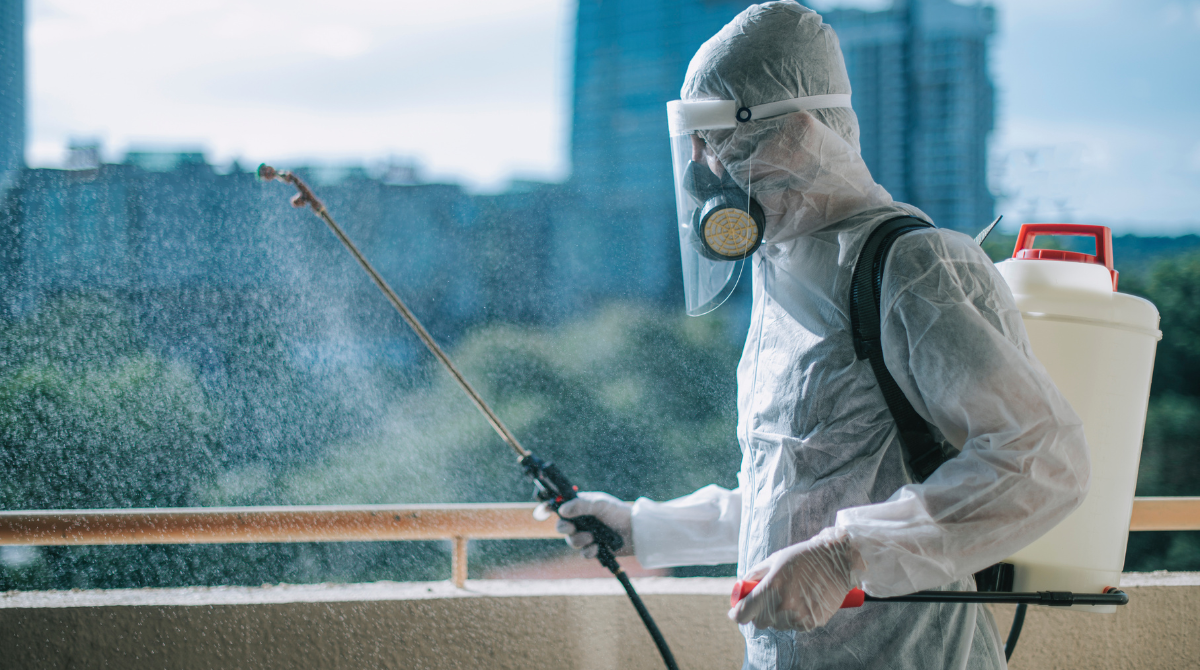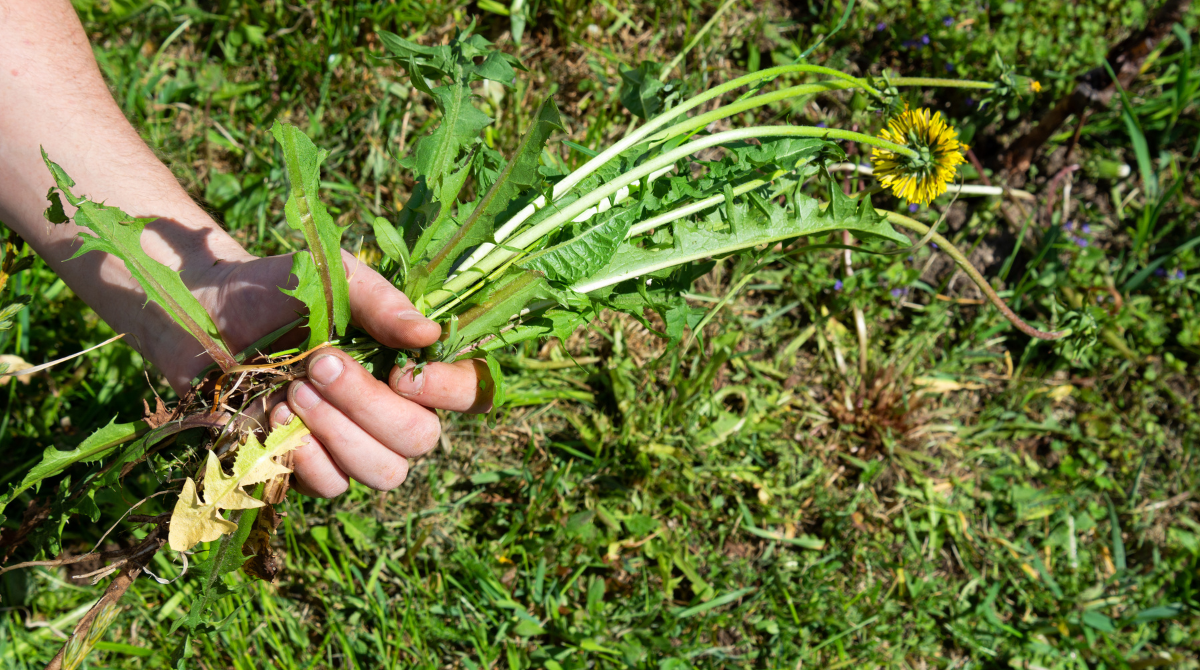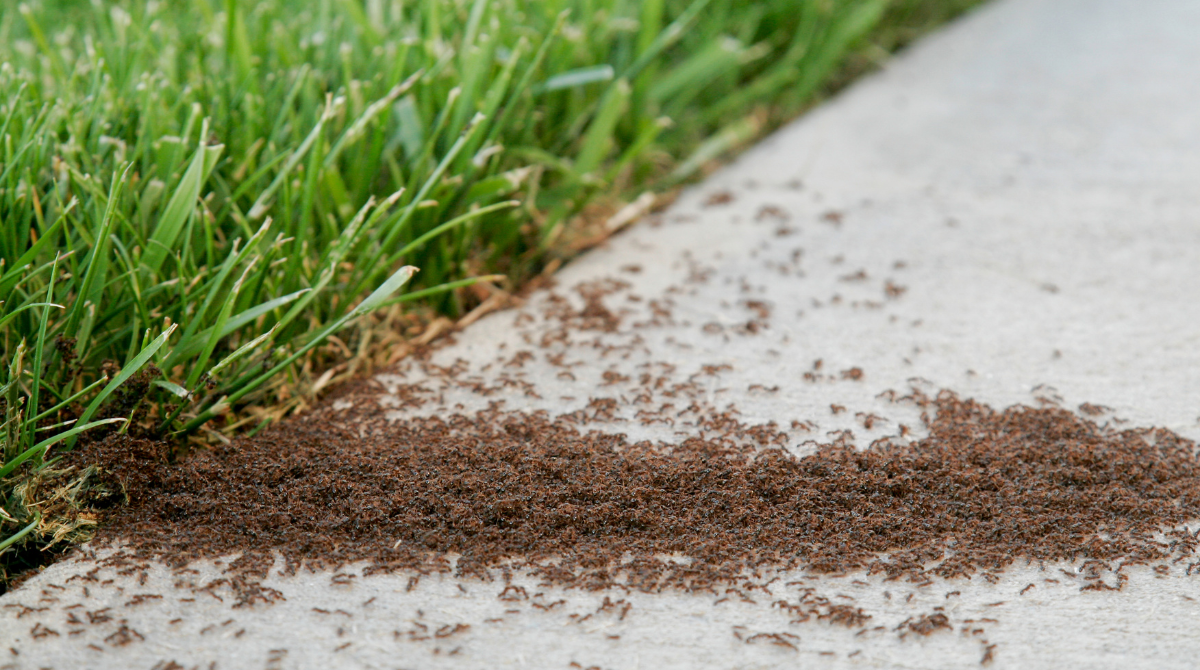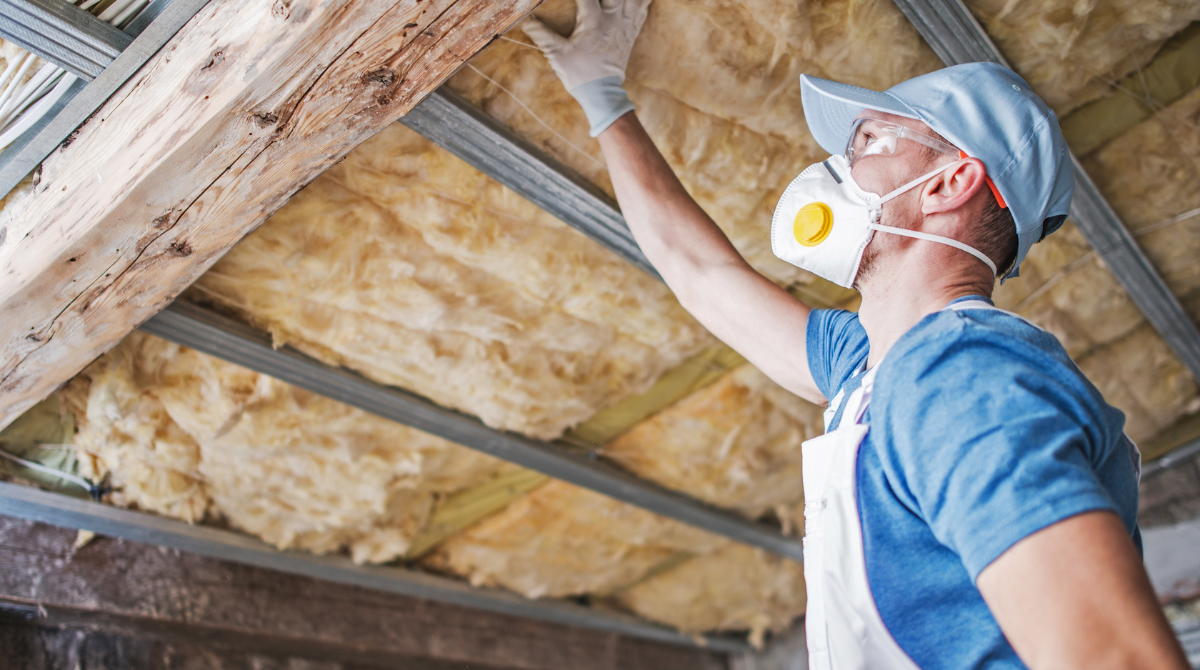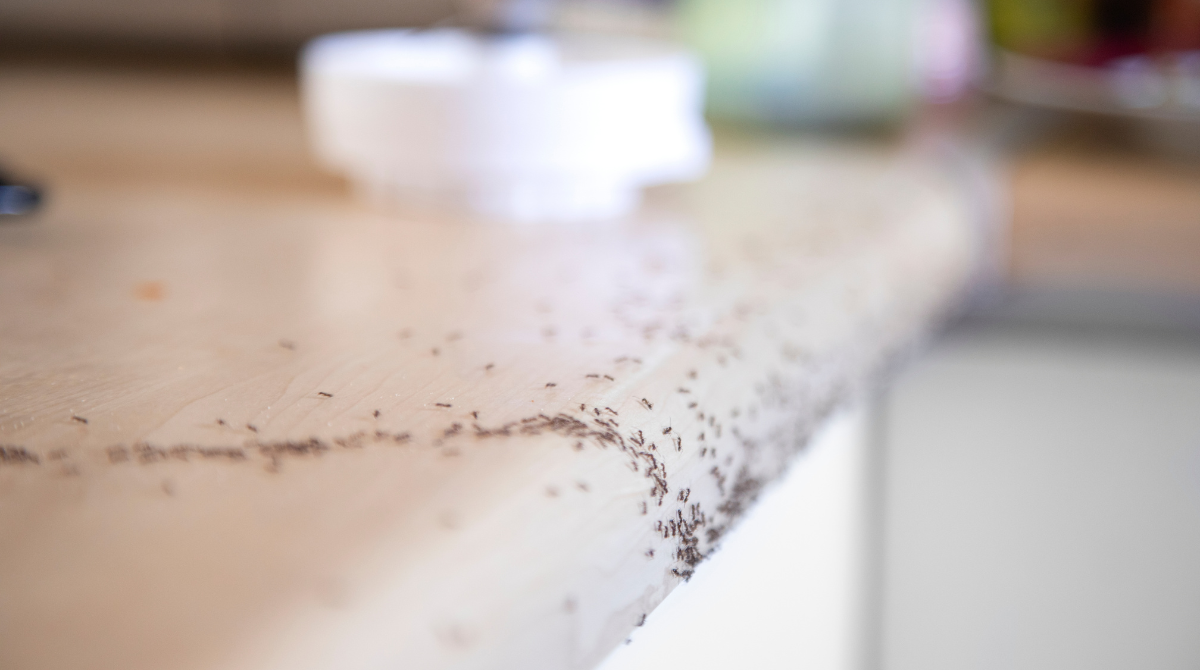Top 5 Signs You May Have Termites Before It’s Too Late
Termites. Just the word can make homeowners cringe. These little critters are often called 'silent destroyers' because they can munch away at your house for ages without you even knowing. By the time you see obvious damage, it can mean big repair bills. But what if you could catch them early? Knowing the signs of termites is your best defense. Let's look at some common clues that might mean these pests have moved in.
Key Takeaways
- Hollow-sounding wood when tapped can indicate termites have eaten it from the inside out.
- Finding discarded wings near windows or doors is a sign that termites have recently swarmed and may be establishing a colony.
- Mud tubes on your foundation or walls are a clear sign of subterranean termites traveling to and from their food source.
- Termite droppings, often mistaken for sawdust or coffee grounds, are a tell-tale sign, especially from drywood termites.
- Stuck windows or doors, or bubbling/peeling paint, can be caused by the moisture and wood damage termites create.
Hollow-Sounding Wood
Termites are sneaky little creatures, and one of the first ways you might notice them is if the wood in your house starts to sound... off. Think about it: termites tunnel through wood from the inside out. They’re basically hollowing it out, leaving just a thin outer shell. So, if you tap on your baseboards, door frames, or even wooden furniture, and it sounds hollow or papery instead of solid, that’s a big clue.
It’s like tapping on a drum versus tapping on a solid piece of wood. Healthy wood gives a firm, solid sound. Termite-damaged wood, however, will have a much more hollow echo because the internal structure has been eaten away. This is often called the "knock test." You can try it yourself by gently tapping different wooden parts of your home. Pay attention to areas like window sills, door frames, and any wooden beams you can access. This subtle change in sound is a classic indicator of termite activity.
Don't just dismiss a hollow sound as old house quirks. While old houses can creak and groan, a consistent hollow sound across multiple wooden elements warrants a closer look. It’s a sign that something might be eating away at your home’s structure from within.
Here’s a quick rundown of what to listen for:
- Solid Sound: Healthy wood, sounds firm and dense when tapped.
- Hollow Sound: Termite-damaged wood, sounds papery or empty.
- Crumbly Texture: If you can easily poke a hole in the wood with a screwdriver, it’s a bad sign.
If you suspect your wood might be compromised, it’s worth getting a professional inspection. They have ways to check for signs of termites in your home that go beyond just listening. Catching it early can save you a lot of headaches and money down the road.
Discarded Wings Near Windows
You know, sometimes the smallest things can be the biggest clues. When termites, specifically the reproductive ones called swarmers, are looking to start a new colony, they'll fly around and then shed their wings. If you start noticing piles of tiny, translucent wings, especially around your windowsills or near doorways, it's a pretty strong indicator that termites have been or are currently active in your home. They're attracted to light, which is why they often end up near windows. It's easy to mistake these wings for those of flying ants, but termite wings are all the same size, and they lack that pinched waist that ants have. Finding these discarded wings is like finding tiny breadcrumbs left by an unwelcome guest. It means a swarm has visited, and where there's one swarm, there's often a colony nearby, or worse, already established within your home's structure.
Mud Tubes on Foundations
Termites, especially the subterranean kind, need to stay protected from drying out and from predators. To do this, they construct these fascinating, albeit concerning, mud tubes. Think of them as tiny, covered highways made of soil, saliva, and their own droppings. You’ll most often find these pencil-sized tunnels running along your foundation walls, in crawl spaces, or even up basement corners. They’re a direct pathway from the soil, where their colony lives, right into the wooden structure of your home. If you spot these mud highways, it’s a pretty clear signal that termites have already established a route to your house. It’s easy to overlook them because they can blend in with dirt or shadows, but keeping an eye out around your home’s base is key. If you find one, try gently breaking off a small piece. If termites are active, they’ll likely repair it, or you might even see some workers scurrying about.
Termite Droppings
You might not think about termite droppings, but they can actually be a pretty big clue that you've got unwanted guests. These little piles, often called 'frass,' are basically termite waste. Think of it like this: as termites munch their way through your wooden structures, they have to get rid of the stuff they don't digest. They push this out of tiny holes, and it can end up looking a lot like sawdust or even coffee grounds.
The type of droppings you find can tell you a bit about the kind of termites you're dealing with. Drywood termites, for instance, are known for leaving behind these distinct, pellet-like droppings. You'll usually find them clustered beneath areas where they've been feeding, like under attic beams or wooden furniture. Subterranean termites, on the other hand, tend to use their droppings to build their mud tubes, so you're less likely to see piles of frass from them out in the open.
So, if you're doing a bit of cleaning or just tidying up, keep an eye out for these unusual little piles. They might seem insignificant, but they're a pretty clear indicator that termites are active in your home.
Finding these droppings is a strong signal that termites are present and actively consuming wood. It's a sign that shouldn't be ignored, as the damage can accumulate over time.
Stuck Windows or Doors
Ever notice a window or door that’s suddenly become a real pain to open or close? You might just blame the weather or maybe the house settling, but if it’s happening more often, it could be a sign of termites. These little pests love to munch on the wood around your windows and door frames because it’s often exposed and easy for them to get to. As they chew away, they can actually warp the wood. This warping is what makes those frames swell and stick. It’s not just about a little inconvenience; it’s a clear indicator that something’s not right with the structure of your home.
Think about it:
- The wood in your frames might be weakening from the inside out.
- This weakening can cause the frames to distort, making movement difficult.
- It’s a subtle change, but one that directly impacts the usability of your home.
If you’re finding that your windows and doors are sticking more than usual, it’s worth investigating further. Look for other signs like bubbling paint on the frames or small cracks that weren't there before. These can be further clues that termites have made your home their buffet.
Bubbling or Peeling Paint
You might notice your paint looking a bit off, maybe bubbling or peeling in spots. It’s easy to just think it’s from humidity or maybe a bad paint job, but termites can actually cause this. As they munch away at the wood underneath, they release moisture. This trapped moisture can make the paint bubble up or start to peel away from the wall. It’s a subtle sign, but definitely one to watch out for. If you see this happening, especially in areas where wood meets the wall, it's worth investigating further. Sometimes, this damage is hidden right under the surface, making it tricky to spot unless you're really looking. You can check out signs of termite damage for more details on what to look for.
Clicking Noises in Walls
You know how sometimes you hear faint scratching or tapping sounds inside your walls, especially when it’s quiet at night? Well, that could be termites. It’s not the wood itself making the noise, but rather the soldier termites. They actually bang their heads against the wood or shake their bodies to communicate with other termites in the colony, usually to warn them about danger. It’s a pretty subtle sound, easy to miss if you’re not paying attention.
Think of it like a tiny, secret alarm system going off within your home’s structure.
- Listen closely in quiet rooms, especially at night.
- Press your ear against walls, particularly near baseboards or wooden structural elements.
- Try tapping gently on the wall; sometimes this can provoke a response.
If you hear these faint, rhythmic sounds, it’s definitely worth investigating further. It’s one of those signs that, while not as obvious as seeing mud tubes, can indicate a problem that’s been going on for a while.
Sagging Floors or Ceilings
You know how sometimes you walk across a floor, and it feels a little… soft? Or maybe you look up at the ceiling, and it seems to be dipping a bit? That could be a sign that termites have been busy munching away at the wooden beams and supports inside your home. They eat wood from the inside out, weakening the structure without you even realizing it. It’s not just about aesthetics; this kind of damage affects the actual integrity of your house.
Think about it: termites tunnel through the wood, creating galleries and tunnels. As they do this, they essentially hollow out the wood, leaving just a thin outer layer. This makes the wood much weaker.
Here are a few things to look out for:
- Floors that feel spongy or have a noticeable dip when you walk on them.
- Ceilings that appear to be sagging, especially in the middle of a room or near light fixtures.
- Cracks appearing in ceiling paint or plaster, which can happen as the underlying wood shifts.
It’s easy to dismiss these issues as just normal wear and tear, or maybe a bit of settling. But if you’re noticing these kinds of changes, especially in conjunction with other signs like mud tubes or discarded wings, it’s definitely worth investigating further. Getting a professional inspection can help determine if termites are the culprit behind these structural changes. You can find more information about termite damage and its signs on pages like this one about termite damage.
Blisters in Wood Floors
You might notice your wood floors looking a bit off, maybe with some raised areas or dark spots that look like water damage. This can happen when termites tunnel underneath the flooring. They create these little tunnels, and the pressure from their activity can cause the wood to blister or buckle. It’s not always obvious, and sometimes it can even make the laminate flooring start to peel if there’s moisture involved. It’s a subtle sign, but definitely one to watch out for.
Termites are sneaky like that, working from the inside out. What looks like a minor cosmetic issue could actually be a sign of a much bigger problem developing beneath your feet. If you see these blisters, it’s worth investigating further to see if termites are the cause. You can often find more information about identifying termite damage on pest control websites.
Here’s what to look for:
- Dark, raised spots on the wood.
- Areas that resemble water damage.
- Peeling or bubbling of the floor's surface, especially if it's laminate.
- Wood that feels soft or spongy in those areas.
Don't just assume it's from spilled drinks or old water damage. Termites can mimic other issues, so a closer look is always a good idea.
Mystery "Dirt" in Odd Places
You might notice small piles of what looks like dirt or sand in strange places, like inside cabinets, on countertops, or even in your closets. This isn't just random dust; it's often termite frass, which is essentially their droppings. Worker termites meticulously clean out their colonies and push this material out through tiny holes.
These droppings can look a lot like sawdust or coffee grounds, depending on the termite species. For instance, drywood termites, common in warmer climates, leave behind small, pellet-like droppings that are often wood-colored. Subterranean termites, on the other hand, tend to use their droppings mixed with soil and saliva to build their protective mud tubes, so you might not see their frass as readily unless it's pushed out of a gallery.
Finding these little piles of 'dirt' is a strong indicator that termites are actively working within your home's structure. They're essentially tidying up their living space, and in doing so, they're leaving behind a tell-tale sign of their presence.
Here's what to look for:
- Location: Check areas that are typically clean and enclosed, like inside drawers, on window sills, or in corners of rooms.
- Appearance: The material often resembles fine sawdust, sand, or tiny pellets.
- Consistency: It might be dry and crumbly, or slightly damp if it's mixed with saliva.
Don't just sweep it away without investigating. If you see this mysterious dirt, it's worth taking a closer look or calling a professional for an inspection.
Have you ever found strange dirt in unusual spots around your home? It can be puzzling, but don't let it worry you. Understanding what's causing these odd messes is the first step to keeping your home clean and pest-free. If you're curious about these mysterious findings or need help dealing with them, we've got the answers you need.
Don't Wait for the Walls to Crumble
So, you've read through the signs, and maybe a few of them sounded a little too familiar. The thing is, termites are sneaky. They don't exactly announce their arrival with a trumpet fanfare. By the time you see major damage, like sagging floors or wood that crumbles in your hand, they've likely been having a feast for a while. That's why keeping an eye out for those smaller clues – the mud tubes, the discarded wings, the hollow sound of wood – is so important. If you suspect anything, don't just hope it goes away. It's always better to get a professional opinion. A quick inspection could save you a massive headache and a whole lot of money down the road. Better safe than sorry when it comes to protecting your home.
Frequently Asked Questions
How quickly do termites spread?
Termites can spread surprisingly fast! A colony of about 60,000 termites can munch through a foot of a 2x4 piece of wood in just 5 to 6 months. If you don't stop them, they can cause big problems for your house's structure in about 1 to 2 years.
Can I get rid of termites myself?
While you can buy sprays and foams at the store, they usually only kill the termites you can see on the surface. The main colony and the queen often survive. Professional treatments, like special liquids or bait systems, are much better at getting rid of the whole problem.
Are termites active in the winter?
Yes, termites are still around in winter! The ones that live underground (subterranean termites) just dig deeper to stay warm but keep eating. The termites that live in wood (drywood termites) stay active all year round inside your house.
What's the usual cost to treat termites?
The cost can change a lot, usually from around $200 to over $2,500. It depends on how bad the termite problem is, what kind of treatment is needed (just in one spot or the whole house), and where you live.
How can I try to prevent termites naturally?
There's no natural method that's guaranteed to work 100%, but you can help by keeping things clean and dry. Make sure to keep mulch and branches away from your house's walls, throw away old cardboard boxes, and fix any leaky pipes right away. Also, try to keep wood from touching the soil and seal up any cracks in your foundation.
If I see termites, is it too late to fix the problem?
If you see termites, it's not necessarily too late, but you should act quickly. The best thing to do is call a professional termite inspector. They can check your home, figure out how bad the problem is, and tell you the best way to get rid of them and fix any damage.
Why are termites considered such a big problem?
Termites are often called 'silent destroyers' because they can eat away at your home's wooden parts for a long time without making much noise. By the time you see obvious damage, like sagging floors or crumbling walls, the infestation might have been going on for years, and the repairs could be very expensive.
What kinds of sounds or physical signs should I look for?
You might hear faint clicking or rustling sounds inside your walls, especially at night. This can happen when termite soldiers bang their heads against the wood to warn others of danger. Also, if your doors or windows feel stuck or hard to open, it could be because termites have damaged and warped the wooden frames.


